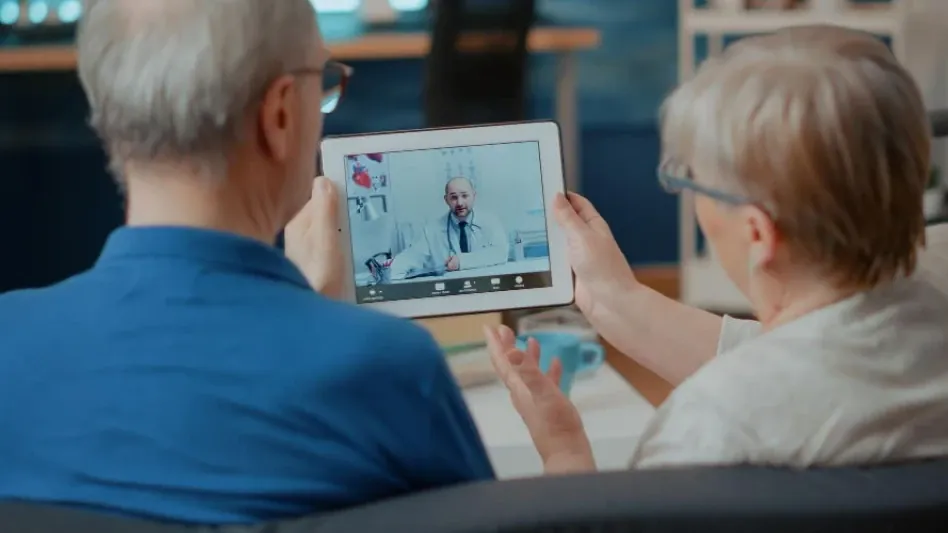As digital health technologies (DHTs) continue to evolve, their potential to enhance healthcare delivery and outcomes becomes clearer. However, the rapid adoption of these technologies has revealed significant disparities, particularly among older adults aged 50 to 80 in the United States. A comprehensive study published in JAMA Network Open highlighted that while 81% of older adults reported using at least one form of DHT, such as telehealth services (49%) and mobile health apps (44%), patient portals remained the most widely adopted. Despite these promising numbers, the study unveiled notable gaps in usage across different demographic groups, revealing a digital divide that must be addressed to ensure equitable access to healthcare.
Key points from the study suggest that DHT disparities are influenced by race, income, education, and geographical location. These factors contribute to unequal adoption rates, with only 11% of Black respondents and 12% of Hispanic respondents using DHTs, compared to 70% of white respondents. The disparities are not merely circumstantial; they stem from deep-rooted issues such as medical mistrust, language barriers, and systemic inequities. Moreover, socioeconomic status plays a crucial role in DHT usage, as higher income and educational attainment are directly linked to higher adoption rates. Urban residents exhibit greater DHT adoption compared to their rural counterparts, where limited broadband access poses a significant obstacle.
The Role of Socioeconomic Factors and Geography
The relationship between socioeconomic factors and DHT adoption among older adults is particularly striking. Higher income and educational attainment not only correlate with more extensive use of digital health technologies but also highlight the gap between those who can leverage these tools and those who cannot. For instance, wealthy individuals are more likely to have the resources to access high-speed internet and afford devices necessary for telehealth services and mobile health apps. In contrast, older adults with lower incomes may struggle to integrate these technologies into their healthcare routines, missing out on potential benefits like preventive care and seamless access to medical consultations.
Geographical disparities also play a significant role in DHT adoption, further exacerbating the digital divide in the healthcare sector. Urban areas tend to have better digital infrastructure, such as robust broadband access, facilitating easier adoption of DHTs for their residents. On the other hand, rural areas often face considerable challenges, including limited internet availability and fewer healthcare resources. These limitations hinder older adults living in rural communities from utilizing digital health services, ultimately affecting their overall health outcomes. Addressing these geographical disparities is crucial in ensuring that all older adults, regardless of their location, have equal access to the benefits offered by digital health technologies.
Targeted Strategies for Equitable Healthcare Access
To tackle these disparities, health systems and policymakers must consider the unique needs of older adults when deploying digital health technologies. Efforts to bridge the digital divide should include expanding broadband access in underserved areas and providing affordable devices to those in need. Additionally, improving digital literacy through targeted education programs can empower older adults to embrace these technologies confidently and effectively. The importance of these initiatives is underscored by the National Poll on Healthy Aging in 2023, which found that patient portal usage jumped to 78% from 51% in 2018, underscoring the potential for growth when barriers are addressed.
AI-powered care navigation platforms are emerging as promising tools to help senior patients navigate complex healthcare systems. These platforms can mitigate barriers such as isolation and transportation, providing older adults with personalized support and guidance. Furthermore, addressing medical mistrust and language barriers through culturally competent care and communication strategies is essential in fostering trust and encouraging greater adoption of DHTs among minority populations. By implementing evidence-based strategies to promote inclusion in research, clinical practice, and training, healthcare providers can work towards closing the gap and ensuring equitable healthcare access for all older adults.
The Path Forward
As digital health technologies (DHTs) continue to advance, their potential to improve healthcare delivery and outcomes becomes increasingly evident. However, the swift adoption of these technologies has exposed substantial disparities, especially among older adults aged 50 to 80 in the U.S. A comprehensive study in JAMA Network Open reported that while 81% of older adults utilized at least one form of DHT, such as telehealth services (49%) and mobile health apps (44%), patient portals remained the most common. Despite encouraging adoption rates, significant gaps in usage among different demographic groups were observed, underscoring a digital divide that needs addressing for equitable healthcare access.
The study highlights that DHT disparities are influenced by race, income, education, and geographic location. Black and Hispanic respondents had notably lower adoption rates (11% and 12%, respectively) compared to 70% of white respondents. These disparities are rooted in issues such as medical mistrust, language barriers, and systemic inequities. Socioeconomic status is crucial, with higher income and education linked to greater DHT usage. Urban residents adopt DHTs more readily than rural residents, where limited broadband access remains a significant barrier.









